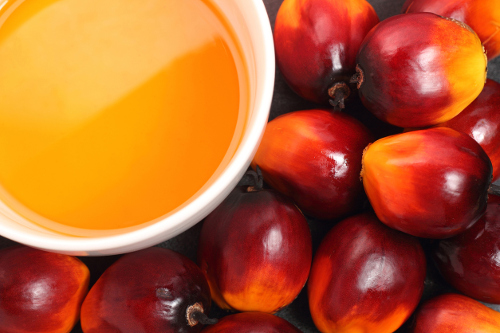 When it comes to cooking oil, there are many on the market to choose from. The question is, which one is the healthiest? Vegetable oil has been the focus of discussion on many health sites lately. And now red palm oil seems to be entering the ring. If you’re like me, then you’ve been left confused as to which oil is good for your health and which to stay away from.
When it comes to cooking oil, there are many on the market to choose from. The question is, which one is the healthiest? Vegetable oil has been the focus of discussion on many health sites lately. And now red palm oil seems to be entering the ring. If you’re like me, then you’ve been left confused as to which oil is good for your health and which to stay away from.
Red palm oil (organic, virgin, and unrefined) has been widely used in the coastal regions of West and Central Africa and Central and South America as a “sacred food” for over 4,000 years. In North America, we are just beginning to hear about the amazing health benefits of this cooking oil.
Olive oil is great on salad, but when cooked at a high temperature, it loses many of its health benefits and may produce chemicals that are harmful to you. Avocado oil is packed full of health benefits, but can be quite expensive. Coconut oil has been getting the most attention from health enthusiasts.
Red palm oil has been relatively ignored by most folks…until now.
The Health Benefits of Red Palm Oil

Thanks to a Dr. Oz review of red palm oil, and a lot of new research, many leaders in the health field are wondering if it could be the new #1 of healthy oils.
I watched the Dr. Oz episode as he shared his embarrassment over not researching red palm oil and its health benefits earlier. He went on to quote a controlled study that had amazing results from patients ingesting red palm oil.
According to Dr. Oz, those who were eating red palm oil on a daily basis saw their bad cholesterol levels reduced by 40% in one month.
1. Metabolism
So many other vegetable oils that we consume metabolize slowly and get stored as fat in the body. Red palm oil, however, goes to the liver and gets burned up as calories for the day. This will help with your fat tissue concentration because you are not storing it. You are burning it, which, in turn, ignites your metabolism.
2. Heart
Although red palm oil contains saturated fat, studies indicate it is beneficial in keeping the blood vessels open in the heart. Its fatty acid composition (50% saturated, 40% unsaturated, and 10% polyunsaturated) means that it does NOT promote atherosclerosis or arterial thrombosis.
3. Antioxidant Properties
In addition to red palm oil being heart healthy, it is also loaded with phytonutrients such as carotenoids, sterols, and vitamin E. With all of these antioxidant and anti-inflammatory-rich natural chemicals, red palm oil could potentially reduce the risk of a variety of diseases such as Alzheimer’s disease, cancer, hypertension, macular degeneration, and many more.
One of the most impressive benefits of red palm oil is that it contains the most abundant amount of antioxidant vitamins A and E of any plant-based oil. These two vitamins are praised for health qualities such as killing cancer cells and preventing strokes. This may be one of the reasons why the production of red palm oil has doubled since 1995.
Red Palm Oil: Fresh vs. Oxidized
Palm oil can be purchased in a fresh state or at various levels of oxidation. Oxidation is the result of processing the oil for different culinary purposes. The most commonly used palm oil is in the oxidized state, which can pose a danger to the biochemical and physiological functions of the body. Oxidized palm oil is said to induce reproductive toxicity and toxicity of the kidney, lung, liver, and heart. So, when buying palm oil, be sure that it is fresh and has not been oxidized.
Give Red Palm Oil a Try
I don’t know about you, but after hearing the many health benefits, I have decided to switch my coconut oil and give red palm oil a try!
Just remember that you will want to use only certified sustainable palm oil (CSPO). Many large companies are destroying forests to harvest palm oil, so be sure to check what you are buying is environmentally friendly. You will not only be improving your health, but you will also be improving the world.
Sources
“Palm Oil: A Fat-tastic Tropical Superfood,” Mercola;
http://articles.mercola.com/herbal-oils/palm-oil.aspx, last accessed April 11, 2017.
Weingus, L., “Yes, Cooking With Olive Oil Is Perfectly Safe,” Huffington Post, August 11, 2015; http://www.huffingtonpost.com/entry/olive-oil-explainer_us_55b925cce4b0a13f9d1b5143, last accessed April 11, 2017.
Oguntibeju O., et al., “Red palm oil: nutritional, physiological and therapeutic roles in improving human wellbeing and quality of life,” British Journal of Biomedical Science, 2009; 66(4):216-22. https://www.ncbi.nlm.nih.gov/pubmed/20095133, last accessed April 11, 2017.
Wattanapenpaiboon N., et al., “Phytonutrient deficiency: the place of palm fruit,” Asia Pacific Journal of Clinical Nutrition, 2003; 12(3): 363-8. https://www.ncbi.nlm.nih.gov/pubmed/14506002, last accessed April 11, 2017.
Chandan, K., et al., “Palm Oil–Derived Natural Vitamin E α-Tocotrienol in Brain Health and Disease,” Journal of the American College of Nutrition, 2010;29(3 Suppl):314S-323S. https://www.ncbi.nlm.nih.gov/pmc/articles/PMC3065441/, last accessed April 11, 2017.
